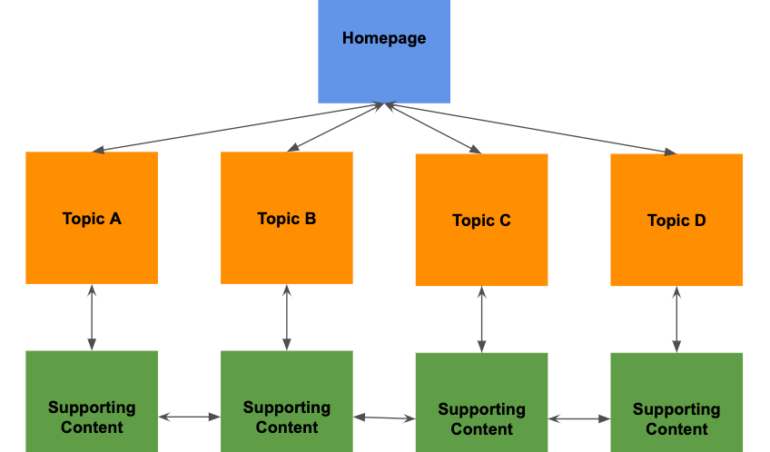In the world of SEO, having a well-structured website is essential. Site architecture, also known as information architecture, is the organization and arrangement of a website’s content, pages, and navigation. A solid site architecture not only helps search engines crawl and index your website effectively but also enhances the user experience. In this article, we will discuss the best practices for site architecture that can improve your SEO.
Table of Contents
Importance of Site Architecture for SEO

Site architecture plays a crucial role in SEO because it determines how easy it is for search engines to crawl and index your website. When search engines crawl your site, they use a crawler to navigate through your pages and index them in their database. A well-organized site architecture ensures that search engines can easily access and understand your website’s content.
1. Site Architecture and User Experience
A well-designed site architecture is not only beneficial for search engines but also for users. It makes it easier for users to navigate through your website and find the information they are looking for. This, in turn, can lead to better engagement and a lower bounce rate, both of which can positively impact your SEO.
2. Site Architecture and Content Organization
A well-organized site architecture can help you arrange your website’s content in a logical manner. This not only makes it easier for users to find what they are looking for but also helps search engines understand the structure of your website’s content. You can use categories, tags, and subcategories to organize your content, making it easier for both search engines and users to navigate your site.
3. Site Architecture and Internal Linking

Internal linking is another critical aspect of site architecture that can affect your SEO. Internal links connect different pages on your website, allowing search engines to crawl and index them more efficiently. A well-planned internal linking structure can help distribute link equity across your site, improving the visibility of your pages on search engines.
Best Practices for Site Architecture
To create a solid site architecture that can improve your SEO, you need to follow some best practices. Here are some of the best practices that you should consider:
1. Create a Clear and Simple Navigation
Your website’s navigation should be clear and simple, allowing users to easily find what they are looking for. Your main navigation menu should be at the top of the page and include links to the most important pages on your website. You can also use breadcrumbs and footer navigation to enhance the user experience.
2. Use a Flat Site Architecture
A flat site architecture means that all pages on your website are accessible within a few clicks from the homepage. This type of architecture makes it easier for search engines to crawl and index your website, as it reduces the number of clicks required to reach each page. It also enhances the user experience, as users can quickly find the information they need.
3. Use Categories and Tags to Organize Content
Categories and tags are an excellent way to organize your website’s content. Categories should be used to group related content, while tags should be used to highlight specific topics within a category. This makes it easier for both search engines and users to navigate your site and find the information they need.
4. Optimize Your URL Structure
Your website’s URL structure should be optimized for both search engines and users. Use descriptive and concise URLs that accurately reflect the content of the page. This not only makes it easier for search engines to understand the content of your pages but also enhances the user experience.
5. Create a Sitemap

A sitemap is a file that lists all the pages on your website and provides information about their relationships with each other. Creating a sitemap and submitting it to search engines can help them crawl and index your website more efficiently. This is especially helpful if your website has a large number of pages or if some pages are difficult to find through navigation.
6. Use Structured Data Markup
Structured data markup is a code that provides additional information about the content of a page to search engines. Using structured data markup can help search engines better understand the content of your pages and display rich snippets in search results. This can improve the visibility of your website and increase click-through rates.
7. Optimize Page Speed
Page speed is an important factor in SEO and user experience. Slow-loading pages can negatively impact your search engine rankings and user engagement. Make sure your website is optimized for speed by minimizing the file size of images, using caching, and optimizing code.
8. Test Your Site Architecture
Testing your site architecture is essential to ensure that it is working correctly. Use tools like Google Search Console to check for crawl errors and broken links. You can also use heatmap tools to see how users are interacting with your website and make changes accordingly.
Conclusion
Creating a well-structured website is essential for SEO and user experience. Following the best practices for site architecture can help search engines crawl and index your website more efficiently, improve the user experience, and enhance your website’s visibility. By implementing these best practices, you can create a solid site architecture that can boost your SEO and help your website succeed.
FAQs
Q.1 What is site architecture?
Site architecture is the organization and arrangement of a website’s content, pages, and navigation.
Q.2 Why is site architecture important for SEO?
Site architecture is important for SEO because it helps search engines crawl and index your website effectively and enhances the user experience.
Q.3 How can I optimize my site architecture for SEO?
You can optimize your site architecture for SEO by creating clear and simple navigation, using a flat site architecture, organizing your content with categories and tags, optimizing your URL structure, using internal linking to distribute link equity, creating a sitemap, using structured data markup, optimizing page speed, and testing your site architecture.
Q.4 What are the benefits of a well-structured site architecture?
A well-structured site architecture can improve SEO, enhance the user experience, and increase the visibility of your website.
Q.5 How can I test my site architecture?
You can test your site architecture by using tools like Google Search Console to check for crawl errors and broken links, and heatmap tools to see how users are interacting with your website.





